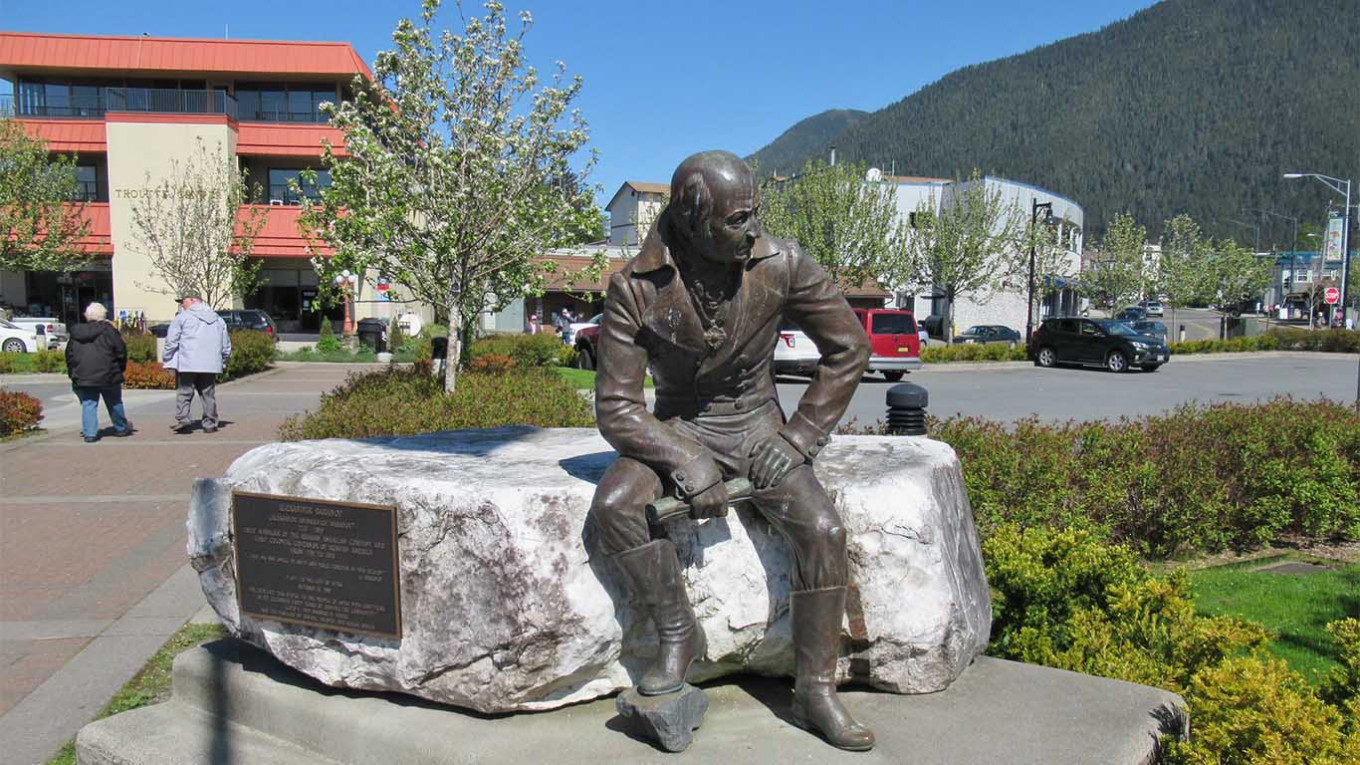The remote Alaskan town of Sitka has voted to relocate the statue of its Russian founder as anti-racism protests worldwide seek to topple statues of historical figures linked to racism and colonialism.
A petition calling for the removal of Russian America governor Alexander Baranov’s monument cites the “armed assault” he led on the local Tinglit people in the early 1800s. Protesters across the West have called for the removal of statues depicting Confederate or colonialist figures since the May killing of an African-American man at the hands of police sparked a wave of Black Lives Matter rallies.
The Sitka city and borough assembly said late Tuesday that the Baranov statue’s location at a central gathering spot incites divisions within the community.
“The monument to Baranov continues to normalize a figure steeped in racial division, violence and injustice,” it said in a resolution approving the statue’s relocation.
It ordered the relocation of Baranov’s statue to the Sitka Historical Society Museum “as soon as possible,” according to the resolution published on the assembly’s website.
Three assembly members and the Sitka Tribe of Alaska’s Tribal Council will coordinate the relocation and “provide important historical background and context” about the figure in its new spot.
Russian billionaire Andrei Filatov’s foundation that collects Soviet-era art previously offered to buy the statue of Baranov and another statue of U.S. President Theodore Roosevelt and bring them to St. Petersburg, citing the "positive mark" left by both men on Russia.
Roosevelt’s statue is set to be removed from the American Museum of Natural History because it explicitly depicts black and indigenous people as subjugated and racially inferior, the mayor of New York City said last month.
Baranov’s statue has been vandalized several times before and after its unveiling in 1989.
Russians are speculated to have first reached Alaska in the 1600s. Regular commercial fur trapping expeditions between Siberia and Alaska began in the 1740s, at which time Russian settlements began appearing on the Alaskan coast.
Historians note many instances of subjugation of the Aleut people at the hands of Russian settlers in the century following the normal establishment of the Russian-Alaskan fur trade.
A Message from The Moscow Times:
Dear readers,
We are facing unprecedented challenges. Russia's Prosecutor General's Office has designated The Moscow Times as an "undesirable" organization, criminalizing our work and putting our staff at risk of prosecution. This follows our earlier unjust labeling as a "foreign agent."
These actions are direct attempts to silence independent journalism in Russia. The authorities claim our work "discredits the decisions of the Russian leadership." We see things differently: we strive to provide accurate, unbiased reporting on Russia.
We, the journalists of The Moscow Times, refuse to be silenced. But to continue our work, we need your help.
Your support, no matter how small, makes a world of difference. If you can, please support us monthly starting from just $2. It's quick to set up, and every contribution makes a significant impact.
By supporting The Moscow Times, you're defending open, independent journalism in the face of repression. Thank you for standing with us.
Remind me later.






